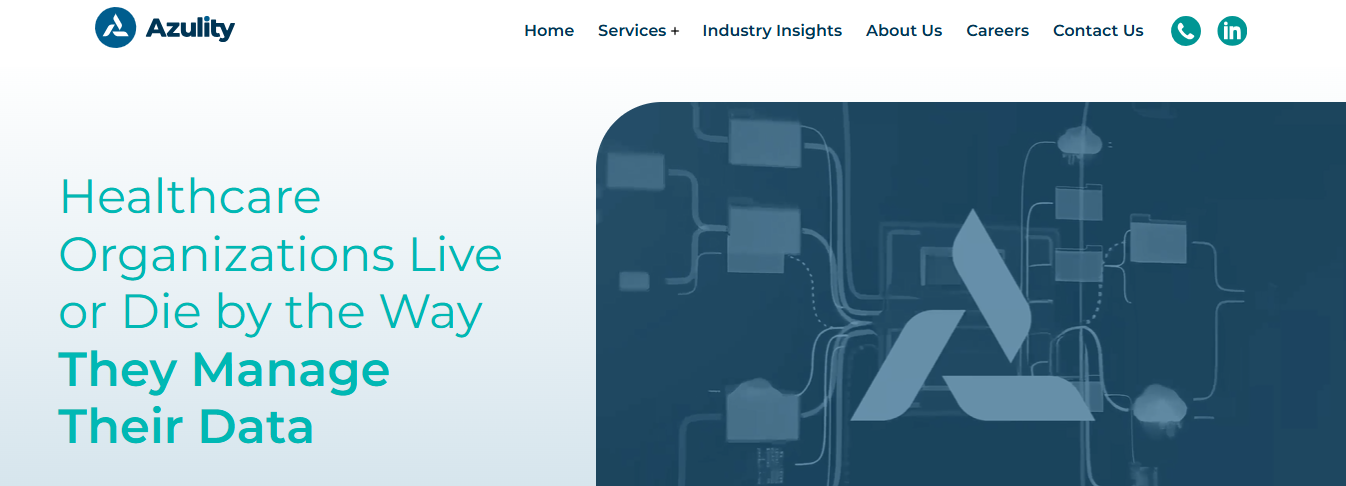Behavioral health credentialing is a critical process that can significantly impact the quality of care provided by healthcare organizations. For example, suppose a facility waits for a behavioral health provider’s credentialing application to be processed. In that case, it can be difficult for the organization to continue delivering services without disruption.
Understanding the healthcare credentialing workflow for behavioral health can help organizations avoid such scenarios. One way to improve this workflow is by using a behavioral health credentialing checklist, which can help organizations keep track of the credentialing process and ensure no detail is overlooked.
This guide will define a behavioral health credentialing checklist, explain why it’s essential, and provide an example to help you get started. Azulity’s provider credentialing services can help your organization achieve its goals by streamlining the credentialing process.
Importance of Credentialing in Behavioral Health


Ensuring Provider Qualifications and Competencies
Credentialing verifies that providers possess the necessary skills and qualifications to deliver behavioral health services. This process helps to confirm that providers have the appropriate education and training. It ensures that providers maintain valid licenses and certifications. Credentialing also helps guarantee that providers adhere to ethical and professional standards.
Maintaining Standards of Care and Patient Safety
Credentialing is crucial in maintaining high standards of care and ensuring patient safety. Verifying provider qualifications helps reduce the risk of malpractice and negligence. Credentialing also helps ensure patients receive quality care from qualified professionals and fosters trust between patients and providers.
Enhancing Reputation and Trustworthiness
Proper credentialing enhances the reputation and trustworthiness of behavioral health practices. Patients and insurers are more likely to choose and trust credentialed providers, which increases patient confidence in the quality of care. It also improves relationships with insurers and bolsters practice credibility in the community.
10 Tips for Efficient Behavioral Health Credentialing
1. Start with Azulity


Azulity specializes in healthcare master data management and provider credentialing services, bringing proven expertise in implementing healthcare data solutions and credentialing across the US. The company’s comprehensive platform consistently synchronizes patient, provider, location, and claims data across all systems and departments.
Key features include healthcare MDM, provider MDM, reference data management, credentialing, and provider enrollment. Azulity serves healthcare technology leaders – from CIOs and CDOs to VPs of data platforms and credentialing – helping them eliminate the costly problems of fragmented data systems. Book a call to learn more about our healthcare master data management services today!
2. Don’t Wait to Get Started
The number-one priority should always be to stay within the timeframes required to receive healthcare reimbursements. Medicaid and Medicare claims must occur within twelve months, or they won’t be paid. Physician credentialing happens within an even shorter period.
Optimally, physician credentialing can occur within ninety days, so aim for a 120-day maximum window to keep things moving swiftly. However, many ways exist for this process to slow down or grind to a halt without proper payment management. It’s common for physician credentialing to take up to 180 days in a suboptimal credentialing process.
3. Set Clear Deadlines
Refine your credentialing process by establishing new deadlines that keep everything on track. Set a hard deadline, then backdate each step to create a calendar of deadlines for each person to follow. When a new counselor joins your behavioral health practice, for example, generate a set of deadlines to support fast and smooth medical credentialing as they come on board.
Before the counselor sees their first patient, ensure the background work is done and there will be no roadblocks moving forward. If a newly hired doctor’s credentialing might take too long, adjust their start date with the organization. This is a common behavioral health revenue cycle management practice that saves hassle and prevents reimbursement issues.
4. Digitize the Data
Although it’s called “paperwork,” it shouldn’t involve much actual paper. To minimize errors, digitize everything. Electronic data entry and data sources are used at every process stage. This allows easy entry, tracking, transmission, and confirmation of all credentialing information. Digitization eliminates the need to scramble around to find missing files and documents.
Even when a particular patient or doctor is still determined to use handwritten letters, scans, or faxes, these documents can be uploaded into a digital platform that serves as a central source of credentials. As you digitize, ensure your medical billing partner or platform is set up to work with Federally Qualified Health Centers (FQHCs). This prevents medical billing errors and omissions, ensuring you always get the most out of your digitized approach.
5. Verify Your State’s Regulations
In addition to federal laws, each state has regulations for medical credentialing. These laws don’t stay the same and are constantly changing due to new legislation. This means the credentialing process you followed a year ago could already be outdated. Check for updates continually. If you use a medical credentialing partner or platform to make this process easier, ensure they constantly stay ahead of regulatory changes.
6. Utilize CAQH Effectively
The Coalition for Affordable Quality Healthcare (CAQH) is a database for providers that sets forth uniform credentialing protocols. Doctors should keep their information up to date with CAQH to make the entire credentialing process faster and easier. In the best-case scenario, CAQH has all the licensure and background information a provider or physician needs for credentialing.
Payers can go straight into CAQH to get the information they need to facilitate payment. Many healthcare and behavioral health organizations require their doctors to update CAQH regularly. Check to ensure all new hires have fresh and accurate CAQH information and double-check that every doctor’s data is reviewed for updates on a fixed schedule.
7. Keep Full Doctor Profiles
This point goes hand in hand with gathering information for the CAQH. Keep your database of additional information that might not be CAQH-required at this time but could support reimbursements and other communications in the future. Go beyond the basics of a doctor’s background and education.
Include details from their resumes, such as professional organizations, previous contracts, community volunteerism, and connections to local healthcare and educational facilities. This information comes in handy whenever there’s a question about their background that the doctor isn’t immediately available to answer.
8. Remove Redundancy
Any duplication in the credentialing and reimbursement process is a problem. Duplicates take extra time and resources and create the potential for denials. Identify points of redundancy in your process. Are you asking for the same information twice? Are there places where duplicate data is entered into two different systems? You can also use redundancy to your advantage in some circumstances. When a doctor already has Kaiser or Anthem credentials in one state, it might be easier to credential them for another.
9. Investigate References
Professional references are a standard part of the credentialing process. If even one of these necessary references is missing, everything else waits for this information. Work proactively to gather and store your doctors’ professional references in advance. If three references are required, gather five. This way, you’ll have extras if one is no longer applicable or you can’t acquire information in time for a specific deadline.
10. Get It Right the First Time
Is your organization experiencing a high rate of reimbursement denials? Industry estimates show that about 85 percent of all medical credentialing applications contain incorrect information. Plus, credentialing-related denials are on the rise.
According to the Medical Group Management Association (MGMA), 54 percent of medical practices have experienced an increase in denials in the past year. This highlights the importance of submitting correct information the first time and every time. One of the best ways to accomplish this is through savvy medical billing partnerships like the example discussed below.
Related Reading
Behavioral Health Credentialing Checklist


1. Licensure
Licensure is one of the first steps in the credentialing process for behavioral health providers. Providers must ensure their professional licenses are current and meet all state requirements. Additionally, verifying that the permit aligns with the provider’s scope of practice is imperative. For example, a licensed clinical social worker (LCSW) should hold an LCSW license—not an LPC license. Providers must also complete and document all required continuing education credits as mandated by their state board.
2. Legal Entity Setup
Next, providers must establish a legal entity for their practice. Setting up a business helps to limit personal liability and is often required by payors for credentialing. Begin by formally establishing your LLC, S-Corp, or sole proprietorship practice. Then, maintain records such as filing paperwork and operating agreements to verify your legal entity. Finally, register your business with the state and obtain any necessary permits.
3. Tax Identification and Banking
Before pursuing credentialing, behavioral health providers should obtain an Employer Identification Number (EIN) through the IRS website. This number is needed for tax purposes, credentialing, and reporting income to the IRS. Providers should also open a business bank account under their practice’s legal name and prepare a voided check or bank letter for Electronic Funds Transfer (EFT) setup with payors.
4. Insurance Coverage
Most payors require behavioral health providers to maintain professional liability insurance to protect against negligence claims in patient care. Providers should obtain coverage that meets or exceeds payor requirements. While general liability insurance is not always required, it’s advisable for comprehensive business protection.
5. Registration with Key Systems
To prepare for credentialing, behavioral health providers must create accounts with several key healthcare systems. First, an Identity & Access (I&A) account is needed to access CMS systems like NPPES and PECOS. Next, providers should obtain and verify both individual (Type 1) and organizational (Type 2) National Provider Identifiers (NPIs). Finally, if enrolling with Medicare, gain access to the Provider Enrollment, Chain, and Ownership System (PECOS).
6. Documentation for Credentialing
As you prepare for the credentialing process, gathering the necessary documents for submission is critical. These include licenses, diplomas, DEA certificates, insurance policies, and W-9 forms. Moreover, all documents must be current and accurate. It’s also wise to organize and securely store these documents for easy access during credentialing.
7. Payor Selection
Before applying for credentialing, behavioral health providers should identify which payors they will work with and prepare accordingly. First, decide whether to handle credentialing in-house or outsource it. Next, evaluate potential payors based on reimbursement rates, patient demographics, and administrative requirements. Finally, once you have selected a payor, prepare and submit applications to your insurance companies.
8. Application Submission
After selecting a payor, apply for credentialing. First, ensure all fields are filled out and any required documents are attached. Next, implement a tracking system to monitor submissions, follow-up deadlines, and responses. Schedule regular follow-ups to stay informed about application statuses.
9. Contracting
Once you have been approved for credentialing by a payor, you will receive a contract for review. Carefully examine the terms, noting reimbursement rates and obligations. Be prepared to discuss any terms that may not align with your practice goals. It’s also wise to consult a healthcare attorney before signing contracts.
10. Billing Setup
After you have signed a contract with a payor, you can begin setting up billing for your practice. First, choose billing software that integrates with your Electronic Health Record (EHR) system and manages claims efficiently. Next, complete the Electronic Funds Transfer (EFT) setup by linking your bank information with all payors for direct deposit of reimbursements. Finally, establish a process for submitting, tracking, and handling claims, including denials and resubmissions.
11. Final Preparations
Before seeing patients, confirm that all systems are in place and that credentialing is complete. You should also determine if you will need continued support from credentialing services or legal advisors as your practice grows.
Azulity’s Healthcare Credentialing Services
Azulity specializes in healthcare master data management and provider credentialing services, bringing proven expertise in implementing healthcare data solutions and credentialing across the US. Our comprehensive platform ensures consistent patient, provider, location, and claims data synchronization across all systems and departments.
Key features include healthcare MDM, provider MDM, reference data management, credentialing, and provider enrollment. We serve healthcare technology leaders – from CIOs and CDOs to VPs of data platforms and credentialing – helping them eliminate the costly problems of fragmented data systems. Book a call to learn more about our healthcare master data management services today!
Related Reading
- Dentist Credentialing Checklist
- How to Do Credentialing in Healthcare
- Nurse Practitioner Credentialing Checklist
- Physician Credentialing Services Cost
Benefits of Credentialing in Behavioral Health


Ensure Providers Are Qualified and Competent
Credentialing confirms that mental health professionals have the appropriate education, training, and licensure to deliver specific services. This process verifies that providers meet established standards, ensuring quality assurance and patient protection.
Boost Credibility and Patient Trust
Patients are more likely to trust and seek services from credentialed providers, knowing they have met rigorous standards. This trust bolsters the provider’s reputation and fosters stronger patient-provider relationships.
Access Insurance Networks and Reimbursement Opportunities
Credentialed providers can join insurance panels, allowing them to offer in-network services. This access expands the patient base and ensures timely reimbursements, enhancing the practice’s financial stability.
Minimize Legal Risks and Ensure Compliance
Proper credentialing helps healthcare organizations avoid legal liabilities by ensuring all practitioners are qualified and compliant with regulatory standards. This process reduces the risk of malpractice claims and enhances overall patient safety.
Streamline Operational Efficiency
Credentialing facilitates smoother billing processes and reduces claim denials, improving operational efficiency within the practice. This efficiency allows providers to focus more on patient care than administrative challenges.
Book a Call to Learn More About Our Provider Credentialing Services
Azulity’s healthcare credentialing services relieve the burden of provider credentialing and enrollment for organizations like yours so that you can focus on what matters most—improving patient outcomes. Our comprehensive platform ensures consistent patient, provider, location, and claims data synchronization across all systems and departments.
Key features include healthcare MDM, provider MDM, reference data management, credentialing, and provider enrollment. We serve healthcare technology leaders—from CIOs and CDOs to VPs of data platforms and credentialing—helping them eliminate the costly problems of fragmented data systems. Book a call to learn more about our healthcare master data management services today!
